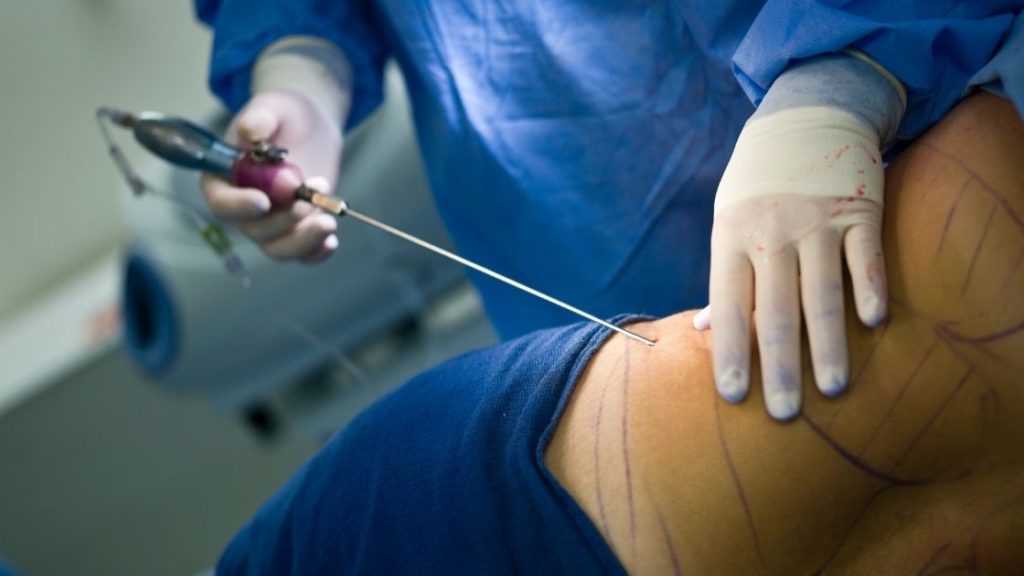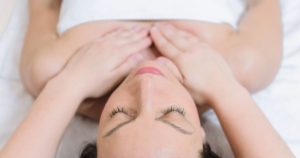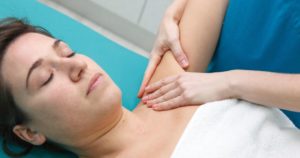Post-Surgery Massage Part 1: Liposuction

Liposuction, sometimes referred to as lipo for short, is a type of fat-removal procedure that uses a suction to remove fat from specific parts of the body. Most often used on the lower abdomen, the surgery is also sought out for addressing excessive fat on the neck, upper arms, chest, back, hips, buttocks, and thighs.
While it competes with breast augmentation as the most popular cosmetic surgery in America, liposuction can be used for medical purposes as well. A few medical reasons for receiving liposuction include:
- Removing benign fatty tumors, known as lipomas from the body.
- Reducing the risk of breast cancer among men living with gynecomastia, an abnormal enlargement of the male breasts.
- Treating hyperhidrosis, a condition in which the body secretes excessive amounts of sweat with no relation to heat or exercise. This abnormality can have a detrimental impact on one’s skin.
- Removing fat from areas impacted by lipodystrophy. Lipodystrophy causes problems with how fat is stored in the body. An affected individual may lose weight in some parts of the body while gaining it in other parts, which can include internal organs.
Whether the goal of the procedure is medical or strictly cosmetic, liposuction will be accompanied by post-surgery side effects and post-op care is crucial to one’s recovery. Surgeons will often prescribe post-surgery massage to treat the swelling and discomfort, and the most effective type of post-surgery is lymphatic drainage.
Why Lymphatic Drainage Massage?
Manual lymphatic drainage is a type of massage that encourages the natural flow of lymph, a fluid that collects waste material from the body, towards the lymph nodes for waste neutralization. It involves the application of slow and gentle strokes which are guided in the direction of the lymph nodes.
Following a liposuction procedure, patients are likely to experience the following symptoms:
- Edema (swelling)
- Soreness
- Tenderness to the touch
- Bruising
Toxins and waste products in the body are the causes of swelling, soreness, tenderness and skin discoloration. Direct trauma to the body, in this case incisions and fat removal, causes the buildup of waste. Lymphatic drainage massage alleviates the post-lipo side effects by aiding the lymph on its journey to the lymph nodes.
How is Post-Surgery Lymphatic Drainage Performed?
Post-surgery lymphatic drainage massage will start with the “awakening” of the lymph nodes. While lymph nodes are scattered all throughout your body, there are some that gather together in groups in certain areas. The neck, armpits, and groin hold a higher lymph node concentration than other parts of the body. It’s worth noting that the chest and abdomen also contain many lymph nodes, as a large portion of liposuction treatments target those specific areas.
So how are these lymph node-rich zones stimulated at the start of the massage? Before the oil application or guided strokes begin, the massage therapist will palpate the areas containing large amounts of lymph nodes. 5-10 light circular motions will be applied to the neck, on top of the chest, inside the armpits, and on the quadrants of the abdominal muscles. If the client is comfortable with it, the areas lateral to the pubic bone may also be palpated. The therapeutic touch will encourage the circulation of blood and lymph to those areas.
After stimulating the lymph nodes, the therapist will address the area (or one of multiple areas) where fat was removed from the body.
In the case of liposuction below the chin or on the neck, light glides will be applied and then guided toward the lymph nodes in the neck. The technique is most effective when the affected body part is elevated, so the patient may have their head elevated on a pillow or a reclined massage table. The elevation will encourage any swelling near the bottom of the neck to drain into the nodes in the chest.
 |
 |
If liposuction was performed on the arm, the therapist will grip the patient’s wrist and lift the arm above the patient’s head. This positioning of the arm allows gravity to do its job, letting the lymph naturally drain towards the nodes in the armpit. This extra push speeds up the lymphatic drainage process, as the therapist guides the already-descending lymph towards the nodes for neutralization.
For the treatment of a tummy liposuction, the therapist may start with a massage on the abdomen, guiding the strokes in the upper quadrants of the abdomen towards the heart (nearer to the lymph nodes in the armpits), and guiding the strokes on the lower quadrants towards the groin.
When liposuction takes place on the back, the lymphatic drainage treatment is similar in style to the one performed on the abdomen, just on the opposite side of the body. The strokes on the upper back will be pushed towards the armpits, whereas the strokes on the lower back will be led towards the oblique muscles on the lateral sides of the back and then wrapped under the abdomen in the direction of the groin.
How Soon Can Post-Lipo Massage Take Place?
A post-lipo patient should follow the surgeon’s orders regarding the best time to receive massage therapy, and the general rule is to wait at least two weeks* after the procedure. However, some doctors will deem bodywork safe as soon as two days after the liposuction, while others will advise to hold off until three to four weeks afterward.
How Safe is Lymphatic Drainage Post-Surgery?
As long as the massage therapist is using slow methodical strokes, lymphatic drainage is generally considered a safe post-lipo treatment. Deep pressure can interrupt lymphatic flow on edema, making it more difficult for the waste products in the lymph fluid to exit the body. There is also the possibility that deep pressure can damage the results of the surgery.
Now You Know!
In Post-Surgery Massage Part 2, we’ll address why lymphatic drainage is the ideal treatment after a breast augmentation procedure.
*Massage therapists at Moyer Total Wellness only offer massage 2+ weeks post operation.

Katrina Jenkins
Author, Licensed Massage Therapist
Katrina Jenkins graduated from Towson University in 2013 with a Bachelor’s Degree in Health Science and worked as a nurse’s aide briefly before pursuing her true passion. She graduated from the Massage Therapy Institute of Colorado in April 2016 with honors and completed the Touch of Healers Scholarship Program the following summer. She has been a part of the Moyer Total Wellness Team since the summer of 2017.
Resources
Eske, Jamie. “Lymphatic Drainage Massage: How-to Guide and Benefits.” Www.medicalnewstoday.com, 21 Mar. 2022, www.medicalnewstoday.com/articles/324518.
Maningas, Talon, et al. “Manual Lymphatic Drainage in Postoperative Abdominoplasty with Core Liposuction Patients.” The American Journal of Cosmetic Surgery, vol. 37, no. 1, 16 Sept. 2019, p. 074880681987494, 10.1177/0748806819874941.
Masson, Igor F. B, et al. “Manual Lymphatic Drainage and Therapeutic Ultrasound in Liposuction and Lipoabdominoplasty Post-Operative Period.” Indian Journal of Plastic Surgery, vol. 47, no. 01, Jan. 2014, pp. 70–76, www.ncbi.nlm.nih.gov/pmc/articles/PMC4075221/, 10.4103/0970-0358.129627.
Wu, Shannon, et al. “Liposuction: Concepts, Safety, and Techniques in Body-Contouring Surgery.” Cleveland Clinic Journal of Medicine, vol. 87, no. 6, June 2020, pp. 367–375, www.ccjm.org/content/ccjom/87/6/367.full.pdf#:~:text=Liposuction%20is%20used%20to%20achieve%20body%20contouring%20by, 10.3949/ccjm.87a.19097.
Photo Credit
Canva by Juanmonino
Canva by pixelshot
Canva by RobertoDavid
Canva by beavera
Canva by OceanProd
Canva by Darunechka



